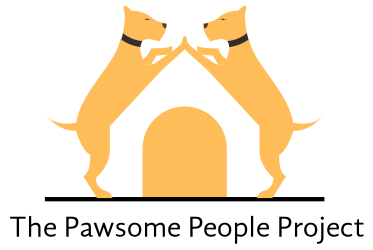Canine Parvovirus
If you are a pet parent or someone who cares for your neighborhood dogs, it is important to be aware of any canine health risks that might be lurking anywhere they go. One such possibly fatal disease that pups and young dogs are susceptible to is the Canine parvovirus (CPV), commonly referred to as Parvo. It is termed as “the puppy killer” and rightfully so - once infected, it almost always means war of the worst kind and it is imperative that as dog parents and caregivers, we understand preventive care, identification of symptoms as well as treatment for dogs infected by this deadly virus.
What is Parvo?
The Canine parvovirus, discovered in 1967, is a highly contagious and resilient virus that is not easily removed from any environment. It most commonly targets the gastrointestinal tract and bone marrow of pups and young dogs, although unvaccinated senior dogs are also at risk of contracting it. Pups are also at risk of suffering from myocarditis, although this is rare. While it undoubtedly poses a serious threat, sticking to a proper vaccination schedule and taking utmost care when they socialize reduces the risk of infection significantly.
How does it spread?
Though not airborne, its resistance to most environmental factors and even many disinfectants provides the virus with enough ammo to proliferate and efficiently infect our canine friends. Direct transmission of Parvo occurs when dogs, through their noses or mouths, come in contact with contaminated feces from other infected dogs while indirect transmission occurs through contact with surfaces that carry the virus. To add to this, parvovirus can stay alive on surfaces for months to years and given that dogs can’t keep their noses off of anything they have access to, - even if their lives really did depend on it - it is very important that unvaccinated and incompletely vaccinated dogs are not exposed to surfaces that haven’t been disinfected, including your own clothes or yourself if you have been interacting with other dogs that are at risk of contracting CPV.
What are the symptoms to look out for?
Parvo usually has an incubation period of 3 to 7 days after which symptoms start to appear. It almost always begins with your pup or dog being lethargic and developing a fever. Some common symptoms of CPV are
These symptoms are not limited to CPV and hence, in the event of your dog showing any or all of these symptoms, it is best to immediately consult with your veterinarian since there could be another serious underlying condition, even if not Parvo.
My dog is showing symptoms of CPV. What do I do now?
Never give it the benefit of the doubt. If your dog is showing any or all of the symptoms mentioned above, take him or her to the vet immediately - the sooner he or she is properly diagnosed, the higher are his or her chances of making it through, as intensive care, especially in the first few days of showing symptoms, is crucial for your dog to survive CPV and make a full recovery. Also keep in mind to isolate your infected dog from other dogs at home the minute you notice symptoms to try and prevent possible transmission.
Diagnosis is usually done by running a fecal test to check for virus shedding and a complete blood test to detect the presence of antibodies. Once diagnosed, treatment usually includes isolated hospitalization to receive supportive care and depending on the severity, antibiotics may also be prescribed. It is highly discouraged to treat Parvovirus with home remedies as proper medical care is his or her best shot at beating it. It has been observed that most puppies that survive the first 3-4 days of this life-threatening disease under complete vet care overcome it and make a full recovery.
Preventive Care
Parvo isn’t 100% preventable, but the following are some pointers to follow to give your dogs all the protection they can have and also a fair chance of fighting the virus, if it were to ever come to that.
It is absolutely essential that your dogs are duly administered the CPV vaccine shots at appropriate intervals. The vaccine is usually a series of three shots when the pup is between 6-to-8 weeks old, at 10-to-12 weeks, and at 14-to-16 weeks. If too much time has passed between these shots, restarting from shot 1 is the usual procedure. Once the series of shots are done, a booster is administered a year later and every 3 years after that.
Take great care not to expose your unvaccinated dogs or incompletely vaccinated dogs to other unvaccinated or incompletely vaccinated dogs or to environments that could potentially carry the virus. Mindful socializing is key to being safe while also allowing your pup to interact with fellow puppers.
Carrying your pup in and out of risky spaces like the veterinarian’s clinic can help him or her stay safer.
Day care for dogs or dog parks can easily become hotspots of CPV and hence are not recommended until vaccinations are complete.
Although Parvo vaccine shots are mandatory for all dogs, the importance of preventive measures and supportive care is unfortunately not common knowledge and oftentimes, our dogs face the wrath of our ignorance and negligence. Understanding CPV goes a long way in ensuring that your dogs are safe from exposure and strict adherence to a vaccination schedule gives them most of the protection they need.

